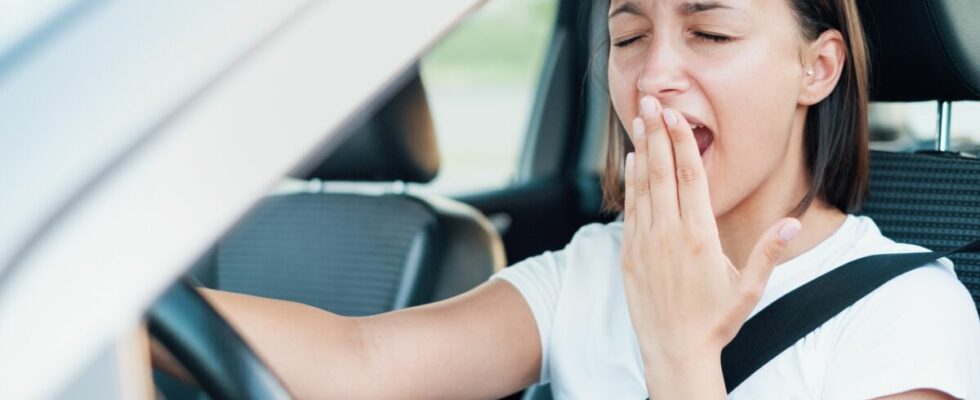Sleep apnea or obstructive sleep apnea syndrome (OSAS) is a disorder of nocturnal ventilation due to the abnormally frequent occurrence of respiratory pauses, as explained by Health Insurance. This syndrome is due to repeated episodes of obstruction of the respiratory tract in the back of the throat. In France, it affects 4% of the population. Furthermore, in a recent study published in the European Respiratory Journalscientists have revealed that certain driving habits could be suggestive of obstructive sleep apnea syndrome in people who have not yet been diagnosed.
Having these habits while driving could alert you to the presence of sleep apnea
Dozing while driving can be very dangerous. Indeed, Road Safety reminds that“one in three fatal accidents is associated with drowsiness in France”. This is why it is recommended that a driver who begins to feel tired stop and rest. Furthermore, when the first signs of fatigue appear, some people resort to various tricks such as drinking coffee, singing while driving or rolling down the window to avoid falling asleep. However, frequent use of more than three of these habits to stay awake while driving could be a sign of excessive sleepiness due to sleep apnea, according to a recent study by Dr. Akshay Dwarakanath and colleagues at the hospital. St James University, Leeds, UK.
To carry out this research, the scientists asked 119 people suffering from obstructive sleep apnea syndrome but not receiving any treatment as well as 105 people not suffering from this syndrome to answer a questionnaire. This series of questions focused on their experience of drowsiness in general in their daily life, as well as their drowsiness while driving. They also had to answer questions about different coping strategies they could adopt to avoid drowsiness as well as their history of driving incidents.
Drowsiness in the car, road accidents: people suffering from sleep apnea more at risk
By comparing the responses to the questionnaire, the scientists found that about 29.4% of people who suffered from sleep apnea “frequently” used more than three driving habits to help them stay awake. They were also more prone to drowsy driving than study participants without the syndrome. Additionally, their reported accident rate was much higher than that of the study controls.
So, as Dr Dwarakanath explains, “Our research suggests that patients with untreated obstructive sleep apnea syndrome often use coping strategies that may be surrogate markers of sleepiness. Thus, asking about these strategies in the clinic could help physicians identify patients who are at risk for road accidents and advise them appropriately.
Sources:
- An exploratory study evaluating the use of coping strategies whilst driving in Obstructive Sleep Apnoea Syndrome patients and controls – European Respiratory Journal
- Understanding sleep apnea – Health Insurance
